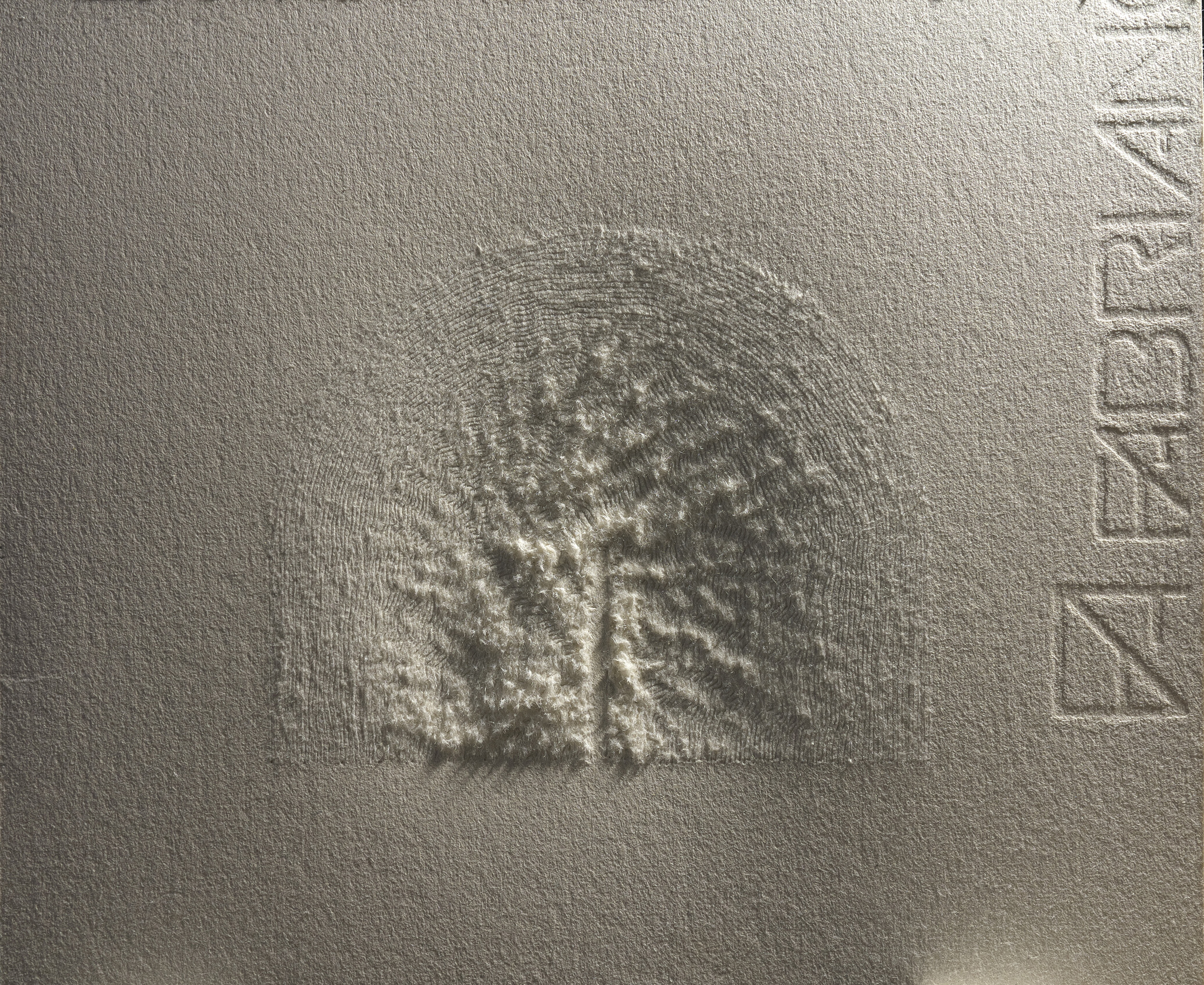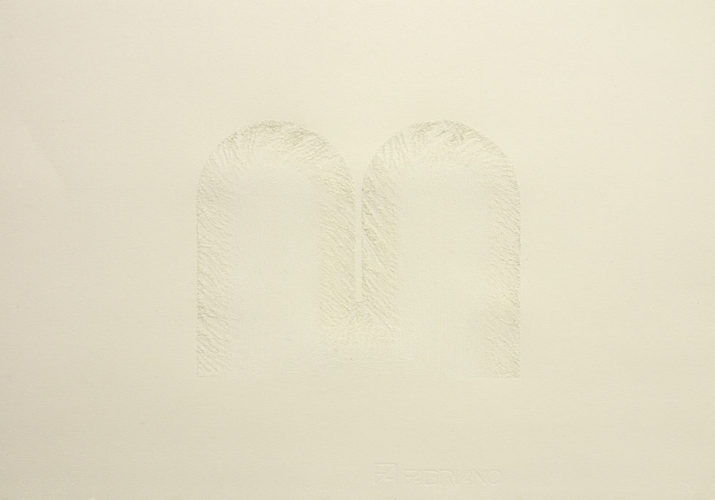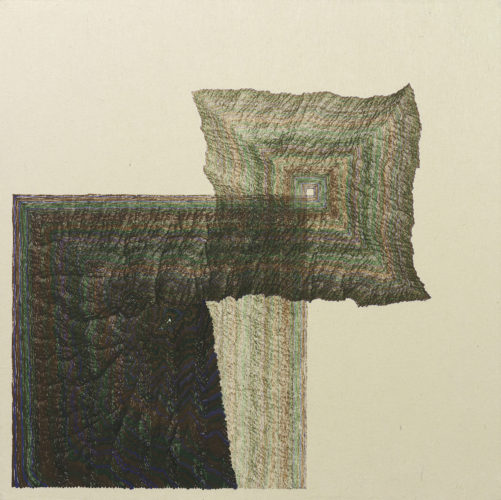Susumu Takashima exhibition-Drawing for tools and mediums
2022.5.9 [Mon] - 5. 26[Thu] 13:00 - 18:30 [日・水 休廊]

病気は薬で治す。しかし、薬が病気を作る事もある。
国は兵器で戦争をする。しかし、兵器が戦争させる事もある。
日本人は日本語で考える。しかし、日本語が考えさせてもいる。
画家は画材で絵を描く。しかし、画材が描かせてもいる。
全ての道具は無意識を持っている。
「道具とメディウムのためのドローイング」高島進
Disease is cured by medicine. But sometimes medicine creates disease.
Nations wage war with weapons. But sometimes weapons make war.
Japanese people think in Japanese. But the Japanese language also makes them think.
Painters paint pictures with art materials. But the materials also make them paint.
All tools have unconsciousness.
“Drawing for Tools and Mediums” Susumu Takashima
: : : : : :
道具とメディウムのためのドローイング
例えば日本人は、日本語が考えるための道具なのですが、ネイティブの日本人には空気のような存在で、日本語の持つ癖や性格等、その特質を考えるのは非常に難しい事かもしれません。しかし日本語を学ぶ外国人には、学びが深まるにつれ、日本語の特質に容易に気づく事が出来るのではないでしょうか?
以前、ラジオ英会話のアメリカ人講師が放送中、彼は日本に来る前は、Yes.No.をはっきり言う率直な性格だったそうですが、日本語を学び上達するにつれ、あいまいな返事しかできなくなり、性格が変わったのだろうかと悩んだ事があると言っていました。又その方はスペイン語も出来、スペイン語で話す時は、会話者同士の距離が短くなるそうです。
これらは一例に過ぎませんが、言語という思考や会話の道具には、思考や会話そのものにも影響を及ぼす何らかの強制力があり、それを、母国語と比較出来る外国人だけが、その言語を使う時の、性格や身振りの変化を通して垣間見る事の出来る、言語の無意識と言って良いのかもしれません。
同様に、私は制作中、作品自身を構成するための道具やメディウムに描かされているという強制力を、快感を伴って感じる瞬間がしばしばあります。
そこには言語と同様、道具自身はそれ固有の目的を持っていますが、目的に沿って使用するだけではなかなか現れない道具の無意識が、作家の癖などによって目的がズレ、現出して来る事があるのではないかと考えます。
私は、そのような道具やメディウムの中に眠る無意識の一部を発見し、可視化しようとしてきました。
私の作品は全て、太さの変わる線のドローイングです。筆で描かれたインクの線は始めが太く、徐々に細くなり、掠れて行きます。逆に色鉛筆やメタルポイントの線は、先を削った最初が細く、徐々に太くなります。共に文章や絵を描くという目的からはズレた道具の無意識の部分と言え、これを反復して強調する事で可視化し、作品名を「筆、インクと紙のためのドローイング」等、「道具とメディウムのためのドローイング」としているのです。
道具の無意識は、道具の目的のズレから浮かび上がって来ると思われます。ズレは、外国人が苦労しながら使う言語からも日々、生み出されているのではないしょうか?
もし日本語の無意識を表現しようとする「日本語のための文学」が存在するとすれば、外国人が日本語で書く文学の中からなのかもしれません。
高島進
*
Drawings for Tools and Mediums
For a Japanese person, the Japanese language is a tool for thinking; however, its existence is like air for a native speaker and it may be difficult for him or her to notice characteristics of the language such as its habits and distinctiveness. Perhaps a non-native person studying the Japanese language can notice such characteristics much easier as his/her studies progress.
Many years ago, an American language teacher speaking on a radio English conversation program broadcast in Japan said that before he came to the country, he had a straightforward personality and liked to answer questions clearly with a yes or no. As his study of the Japanese language progressed, however, his answers became ambiguous and the possibility that his personality had changed made him anxious. Also, the teacher was a Spanish speaker and said that when he spoke Spanish, he tended to stand closer to the person he was speaking to.
These are examples of what I am attempting to describe. While language is a tool for thinking and conversation, it has some kind of power to affect thinking and conversation. Perhaps this is the “subconscious” of language that a person learning a new language — with the ability to compare it with his/her first language — can notice through changes in personality and gestures.
Similarly, there are many moments in which I feel — accompanied by pleasure — the “power” of the tools and mediums that I use pushing me to draw.
Like language, a tool has an intended use. However, I believe that a tool’s subconscious that is rarely noticed becomes visible when things such as the artist’s habits cause the tool’s intended use to be diverted.
I have worked to discover and make visible a part of the subconscious in tools and materials.
All of my works are drawings made with lines that change in width. Ink lines made with brushes are widest at the beginning and gradually become thinner and fainter. Meanwhile, lines made with color pencils and metal point are thinnest at the beginning when they have just been sharpened and gradually become wider. Such use of tools are diversions away from the tools’ intended use (writing text and drawing pictures) and can be called the tools’ subconscious. Through repetition and emphasis, I visualize the subconscious to create works with titles such as “Drawing for Brush, Ink and Paper” and “Drawings for Tools and Mediums.”
The subconscious of tools become visible by use that are diversions from their intended use. Perhaps such diversions are daily occurrences in the language of people who are struggling to learn it.
If a “Literature for the Japanese Language” that attempts to express the subconscious of the Japanese language exists, it is possible that such works can be found in Japanese language literature written by non-natives.
Susumu Takashima
: : : : : :
高島 進
1959年兵庫県生まれ。
1982年武蔵野美術大学造形学部建築学科卒業。1984年武蔵野美術学園油絵科修了。
筆のインクの減少、あるいは色鉛筆や金属の芯の摩耗によって太さがかわっていく線を、並べて反復して描くことでできあがる「素材と道具のためのドローイング」などを制作。
2007年第5回現代日本美術会賞審査員特別賞受賞。アートフェアアジア福岡2018/画廊香月より出展。Art Fair Hong Kong 2018/中国、「高島進 展 / 二つの眼」画廊香月/東京。その他国内外で多数出展、個展開催。青梅市立美術館、羽田空港に作品を収蔵。
*
Susumu Takashima
Born in Hyogo, Japan
Graduated from the Department of Architecture of Musashino Art University in1982.Completed from the Department of Oil Painting of Musashino Art School in 1984.
Susumu Takashima makes use of the peculiarities of ink, brush, and colored pencils. Each work is made up of an accumulation of lines, whose width changes all the time as a result of the wearing of the point of the pencil and the using up of the ink on the brush.
Awarded Examiner Special Prize by The 5th Contemporary Art Society of Japan in 2007.
Art Fair Asia Fukuoka 2018,Gallery Kazuki in japan. Art Fair Hong Kong 2018 in China.
Susumu Takashima soloExhibition,Gallery Kazuki in Tokyo.
Exhibitors many others home and abroad. His works can be found in Ome Municipal Museum of Art in Tokyo、Haneda Airport inTokyo.




Susumu Takashima _instagram
https://www.instagram.com/susu.takashima/?hl=ja